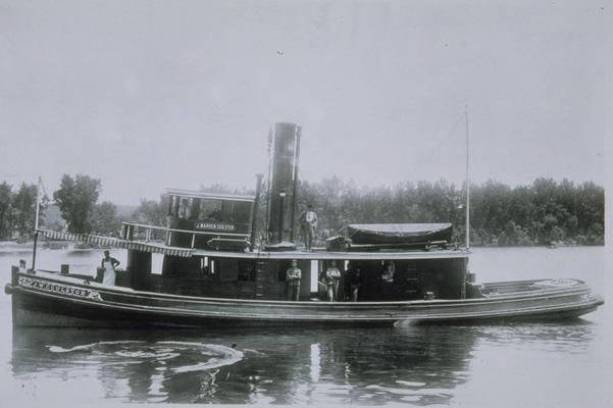By Richard C. Malley for Your Public Media
Highway. Barrier. Resource. Sewer. Over the centuries each of these names has been used to describe the Connecticut River. This prominent feature of the state’s physical landscape also provides a reference point for our sense of place (e.g., “east of the river” or “the lower valley”) in a land where local identity still exerts a powerful influence.
The river’s role in Connecticut’s history has changed over time. Native Americans and early settlers used it for fishing as well as for local transportation and communication; later generations saw it as a conduit of wealth, facilitating commerce with other American colonies, England, and, most importantly, the West Indies. From the river’s mouth vessels carried the agricultural and forest bounty of the hinterland to far-flung ports across the Atlantic world. They returned to the river with more than just rum and molasses; they carried news and ideas from other parts of the world as well.
At first the river posed a barrier to east-west land travel, prompting the development of ferries and, later, bridges. The Connecticut occasionally posed major challenges: the normally placid river could turn deadly if weather events like annual spring freshets or the occasional hurricane triggered severe flooding. Dikes and other expensive flood protection measures could do only so much to ease the threat of damage.

Seymour Paper Mill, Windsor Locks. Photographed by Northern Survey Company, 1880-1890. 2000.191.276. Access to flowing water prompted construction of factories along the river during the 1800s – Connecticut Historical Society
The advent of industrialization in the 19th century saw the Connecticut’s waters tapped for various purposes, including convenient flushing of wastes from factories and, ultimately, municipal sewers. Meanwhile, runoff from large-scale agricultural activity, in particular 20th-century tobacco culture, impacted the river.
Since World War II, the Connecticut River Valley, and much of New England, has entered a post-industrial phase, redefining our relationship with the river. Recreational fishing, rowing, and sailing are now enjoying a popular resurgence due in part to improved water quality and a physical re-connection between people and the river driven by various public riverfront projects. We have come to appreciate anew the river’s value both as playground and as timeless flowing landscape. On July 27, 1998, the Connecticut River was recognized as an American Heritage River; the Nature Conservancy has designated the lower Connecticut River tidelands as one of the Western Hemisphere’s Last Great Places.
Richard Malley formerly Head of Collections at the Connecticut Historical Society.
© Connecticut Public Broadcasting Network and Connecticut Historical Society. All rights reserved. This article originally appeared on Your Public Media
Note: ConnecticutHistory.org does not edit content originally published on another platform and therefore does not update any instances of outdated content or language.









